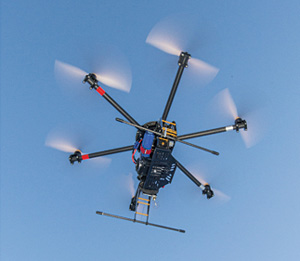When Tony Fadell of iPod fame came up with the idea of the Nest thermostat, it made me smile. I had read an interview with him in a business magazine. He explained how he had retired from Apple with a moving van full of money and had set out to build his dream house. The problem was he couldn’t find a good-looking thermostat. That’s when I smiled.
Over the years, I’ve asked a lot of nonprofessionals what type of heating system they have and most have said, “I have a Honeywell.” For this, we can thank the ubiquitous T-87, that classic, round wall ornament. Fadell obviously liked that round shape because that’s what he chose for his Nest. Hey, who doesn’t like round? It’s a lovely shape.
I was talking to an industry friend about the coming thermostat wars and he mentioned that messing with Honeywell and its patent on the round thermostat was like messing with a battleship — especially if you’re a pipsqueak, startup company like Nest.
“It takes a while for those big guns to come around and point at you,” he said, turreting his outstretched arms into a position where his fists were inches from my nose, “But when they do, watch out!”
That sort of makes you gulp, doesn’t it? Imagine being a tiny company like Nest and having a behemoth like Honeywell bearing down on you. Yikes!
A few weeks later, though, I got the news that Google bought the tiny company for $3.2 billion. I called my industry buddy and asked him what he thought of Google as a battleship.
Stay tuned.
And of course Honeywell began rolling out its own new thermostat. They call it Lyric and it’s also round (what a great idea!). Oh, and it’s also very smart.
Nest works by watching us with a motion sensor and learning our routines. It sees us when we’re sleeping; it knows when we’re awake. It does not yet know if we’ve been bad or good but that’s in the works because Google (through Nest) just bought a company called Dropcam. These folks make tiny cameras, the sort that hide inside, well, let’s say a thermostat. What a great way to keep an eye on the babysitter, or the rotten kids, or your spouse.
Before long, you’re liable to be getting an email from Google recommending good divorce lawyers in your own hometown. Ah, the possibilities are endless.
But back to Honeywell. Its Lyric works by connecting to our smartphones. You going out? Don’t forget to take your phone (as if you would). If the phone’s outside, the heating system responds. And when you’re on your way back home, so is your phone. Lyric knows that and gets ready for you by adjusting the temperature.
Honeywell threw in a humidity sensor, which you would expect from them, but Nest immediately responded with what it calls Airwave, which also considers humidity, as well as the local weather forecast. So there.
And Lyric appeared so quickly that I’m guessing it’s been sitting on some designer’s desk for a while. Let’s face it, both Lyric and Nest are way more expensive than the old T-87 and when Nest arrived, my first thought was that very few people would shell out that much cash for a thermostat. But I was wrong and I think that has been Fadell’s greatest contribution to the thermostat wars, as well as to the heating industry. He proved that people will pay a lot of money for something they can buy for less.
But that shouldn’t have been a surprise for me because I bought his iPod when it first came out, even though it was expensive, in spite of the stack of compact discs I already owned. At the time, I couldn’t believe I paid that much for the thing, and I’ve since bought a bunch more. So I should have known better.
I think our industry needs more people who shake things up like Fadell does. He moves dreamy products off of the desks of his competitors’ designers.
But there’s more to the thermostat wars than Google and Honeywell. A new company called tado° showed up over in Germany. It also has a thermostat that works by tracking the location of a smartphone. The company has had this for a while and it just expanded the technology into air conditioning, which is why I’m going to keep watching them.
Enough is enough
And for those who already have everything, Mercedes is now working with Nest on ways to control a home’s temperature from inside its fancy cars. It seems you also need a smartphone to make this happen, which makes me wonder why the fancy car has to get involved at all, but it’s probably just a Mercedes thing. Some of this begins to get a bit dopey after a while, don’t you think?
For instance, Logitech sells this universal remote it calls Harmony that operates your TV, some high-end lighting and even the stereo. Oh, and it can see right through walls, just like Superman. It costs more than both the Lyric and the Nest, and considering that both your TV and your stereo arrive with remote controls, doesn’t it make you wonder why you need to buy another one? You know you’re going to lose it in the couch anyway, right?
Speaking of couches, I just read that Logitech is working with Nest to give Harmony the ability to talk to the thermostat and control the temperature, so now you never have to get up off the couch. Soon, drones will be delivering beers to your end table.
Seriously, follow this reasoning and tell me we don’t live in a wacky country. You just spent a lot of money for a thermostat that takes the time to learn your habits and consider your needs. Or it watches you when you leave the house and tracks you on your journey. You have the power to control the temperature inside your house from anywhere there is an Internet connection. These thermostats are so brilliant that they make comfort something you experience and enjoy but never consider because everything is just perfect.
So far, so good. But now you spend even more money on a universal remote control that gives you the ability to override the Nest, which you’re supposed to be trusting. And all because you can do this through thick walls.
Does that make any sense to you?
Oh, and Harmony also gives you the ability to turn your smartphone into a remote for your stereo. But you already have a remote for the stereo. It came in the box. You just spent a small fortune on a universal remote that runs everything from one device, and this device now wants you to transfer some of that power to your smartphone. We’re up to three remotes for the music, two of which are lost in the couch.
Wacky, right?
Time goes by. You’re watching TV. Nest is watching you. Your smartphone wants to turn on the music or go for a ride in the Mercedes. Google is watching all this and sending out ads, which are probably appearing on the face of a bound-to-happen, less-expensive Nest (think Amazon’s ad-version of its Kindle). The ads, of course, are for aspirin.
Kind of makes you long for payphones and the T-87, doesn’t it?
HELPFUL LINKS:




